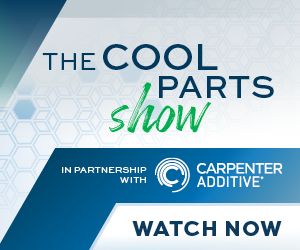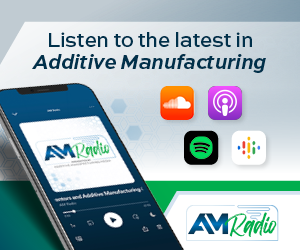Wayland Additive Sets 2021 Launch Date for NeuBeam Production System
The new powder bed fusion (PBF) process is said to overcome many of the limitations for manufacturing large complex metal components.
Share
Read Next
Wayland Additive has set a 2021, commercial launch date for its first production system — Calibur 3 . The company expects to start shipping later the same year. Developed in house from the ground up, the NeuBeam metal AM process is said to eliminate many of the compromises that users of metal AM processes have to make for both part development and into full production.
The company says that NeuBeam overcomes the inherent instabilities of traditional eBeam processes and the internal residual stresses typically associated with laser powder bed fusion (PBF) processes to offer a stable and flexible process. It is said to offer excellent metallurgy capabilities and the ability to process a much wider range of metal materials, including reflective and refractive metals.
Designed specifically for production applications, the Calibur 3 incorporates fully embedded in-process monitoring capabilities that provide full oversight during every build and ensures full traceability for every part.
Unlike the traditional eBeam PBF process, the charging issues that make EBM so unstable have been fully neutralized with NeuBeam using core physics principles developed in the demanding semiconductor industry, according to the company. Moreover, NeuBeam is a hot “part” process rather than a hot “bed” process. This is said to efficiently create parts that are free of residual stresses because the high temperatures are only applied to the part and not the bed, ensuring free-flowing powder post-build (no sinter cake) and stress-free parts with reduced energy consumption.
The NeuBeam process is capable of producing fully dense parts in a wide range of materials, many of which are not compatible with traditional eBeam or laser PBF processes such as refractory metals and highly reflective alloys. As a result, the process can demonstrate vastly improved metallurgy, without many of the compromises that existing metal AM processes necessitate.
Related Content
-
Additive Manufacturing Is Subtractive, Too: How CNC Machining Integrates With AM (Includes Video)
For Keselowski Advanced Manufacturing, succeeding with laser powder bed fusion as a production process means developing a machine shop that is responsive to, and moves at the pacing of, metal 3D printing.
-
Video: How Multimaterial Laser Powder Bed Fusion Works
Penn State University’s CIMP-3D is exploring applications of the Schaeffler Aerosint system for multimaterial 3D printing. During a recent visit, I got an introduction to this system.
-
Quadrus: Powder Management Tactics for Tungsten Rhenium and Other AM Alloys
The expert in additive manufacturing of high-value parts for the Defense Department often must change from one exotic material to another in its powder bed machines. Cleaning is a core competency. Here are lessons of this company’s system for working with an ever-changing mix of 3D printed alloys.













